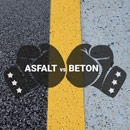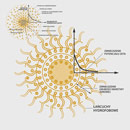Color theory plays a significant role in design education, influencing how visual information is perceived and understood. Understanding the principles of color can enhance the aesthetic quality of projects, leading to more engaging user experiences. In coding development, the application of these principles allows for the creation of intuitive interfaces that resonate with users.
With a wealth of educational resources available, learners can now access a variety of materials that cover the intricate aspects of color theory. From online courses to interactive tutorials and comprehensive guides, these tools empower designers and developers alike to grasp the subtleties of colors, their combinations, and their psychological impacts. By integrating color theory into programming workflows, one can elevate the overall quality of digital products.
As technology continues to advance, the importance of color theory in the coding landscape becomes increasingly evident. By exploring these educational resources, individuals can enhance their skills and contribute more effectively to both design and development disciplines.
Utilizing Online Platforms for Interactive Color Theory Learning
Online platforms have become invaluable tools for engaging in theme creation and design education. They provide a multitude of learning resources that cater to different styles and levels, making it easier for learners to grasp the complexities of color theory. By leveraging interactive tools, users can experiment with color palettes, visualizations, and simulations that provide immediate feedback on their choices.
Platforms such as online courses, interactive tutorials, and design simulators allow learners to apply theoretical knowledge in practical contexts. These resources encourage experimentation and creativity, enabling users to see firsthand how colors interact and influence design outcomes. Community forums and peer feedback on these platforms also enhance the learning experience, fostering collaboration and idea sharing.
Incorporating these online resources into study routines can significantly bolster understanding of color theory, ensuring that learners not only understand the concepts but can also apply them effectively in various design projects. Whether through structured coursework or self-guided exploration, the availability of interactive online tools empowers individuals to refine their skills in color application and design thinking.
Implementing Color Theory Principles in Web Development Projects
Color theory serves as a foundational aspect of design education, influencing how users interact with web products. By understanding the psychological effects of color, developers can create more engaging and visually appealing themes. When constructing a theme, applying harmonious color palettes can enhance user experience and guide navigational elements effectively.
For example, utilizing complementary colors can draw attention to key features or calls to action, fostering user engagement. In contrast, analogous color schemes provide a cohesive and calming aesthetic, ideal for content-heavy sites. Developers should consider color wheel relationships to ensure visual harmony in their projects.
The use of learning resources available online can aid developers in refining their skills in color application. Interactive tutorials provide opportunities to practice and receive feedback, enhancing understanding of color combinations and their impact on design. Tools like Adobe Color or online color pickers allow developers to experiment with palettes and gain insight into color relationships.
By integrating color theory principles into web development, creators can elevate their design offerings. This leads to more intuitive and inviting interfaces, ultimately contributing to a richer user experience. Keeping color psychology and theory in mind during theme creation ensures that projects resonate well with their intended audience.
Analyzing Real-World Examples of Color Theory in Design Frameworks
Color theory plays a fundamental role in the design frameworks used by developers today. Understanding the application of color principles can significantly enhance theme creation and user experience. Various frameworks implement these principles in innovative ways, demonstrating how color choices impact functionality and aesthetics.
For instance, frameworks like Bootstrap and Materialize utilize predefined color palettes that adhere to color harmony rules. These palettes facilitate developers in maintaining consistency across components, allowing for seamless integration of elements. By choosing complementary colors, these frameworks guide users through a more visually appealing interface, improving engagement.
Another noteworthy example is Tailwind CSS, which empowers users with the flexibility to customize color schemes extensively. The utility-first approach enables developers to apply specific hues to elements without cumbersome overrides, promoting a streamlined coding development process. This adaptive use of color highlights how resources can be structured for efficiency while respecting artistic guidelines.
Beyond frameworks, sites like https://studiostyl.es/ offer valuable learning resources on color application in web design. They illustrate effective uses of color combinations and how to achieve balance and contrast, essential components for capturing user attention. This practical approach to color theory demonstrates the significance of real-world applications in driving successful design outcomes.
By analyzing these examples, it becomes clear that a strong grasp of color theory not only enriches the design process but also provides developers with tools to create compelling and functional applications. The thoughtful application of color can elevate user experience, making it a crucial aspect of successful web development.












